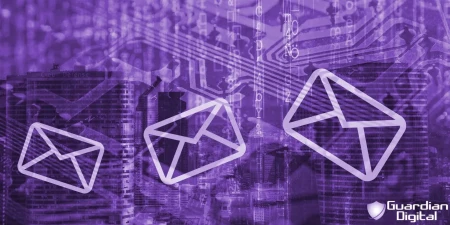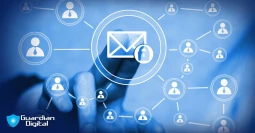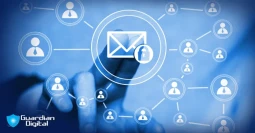How I Survived an Email Bomb Attack

It started like any other day. I checked my emails, replied to a few messages, and resumed my routine. Then, my inbox exploded out of nowhere—not with work-related emails or personal messages, but with an unrelenting flood of subscription confirmations, newsletters, and spam.
At first, I thought it was some glitch. Maybe a mailing list had gone rogue? But as the emails kept coming—hundreds every minute—I knew something was seriously wrong. My inbox was under attack.
What I was experiencing was an email bomb attack—a type of denial-of-service (DoS) attack that floods an inbox with thousands of messages, making it impossible to identify important emails to do my job. And I had no idea how to stop email bomb attacks once they start.
I panicked and was filled with frustration. After some quick research and the support of my IT team and email security provider, I finally regained control. But it wasn’t easy.
So, if you ever find yourself in the middle of a mail bomb attack, here’s what you need to know—and what I wish I had known sooner.
What is an Email Bomb Attack?
Before this happened to me, I had never even heard of an email bomb attack. But as I frantically searched for answers, I learned that this was not just spam—it was a deliberate attack designed to overwhelm my email and hide something more sinister.
The email bomb meaning became painfully clear: when a hacker floods your inbox with thousands of emails, making it nearly impossible to find important messages. Some attacks are meant to disrupt businesses or harass individuals, but others are used as a smokescreen—a way to bury important notifications about unauthorized transactions or security breaches.
It’s a common tactic used against journalists and activists to silence them, business owners and executives to disrupt operations, and everyday people like me, often to hide fraud or cybercrime.
The worst part? It’s almost impossible to stop while it’s happening.
How Did My Inbox Get Flooded? Understanding Email Bomb Attacks
Here’s what happened to me:
My email address was entered into thousands of mailing lists. Hackers used automated bots to sign me up for newsletters, forums, and online subscriptions. Many of these sites didn’t require verification, so the email bomb took effect almost instantly.
Spam filters didn’t stop the attack. Since the emails were coming from legitimate services, my email provider didn’t flag them as spam, and the email security measures I had in place weren’t equipped to handle this type of flood.
I couldn’t find my real emails. Everything important was lost in the flood, making checking for fraudulent transactions, security alerts, or personal messages impossible.
At this point, I knew I had to act fast.
What to Do If You’re Under an Email Bomb Attack?
I made many mistakes at first, but after some trial and error, here’s what worked to get my inbox back under control.
Don’t Delete Emails Manually
My first instinct was to mass delete everything—bad idea. The emails came in too fast, and I risked deleting legitimate messages. Instead, I used filters and rules to automatically redirect junk to a separate folder, blocking obvious patterns tied to the email bomb attack.
Check for Fraud Immediately
The attack wasn’t just an inconvenience—it was a distraction. While I was busy dealing with my inbox, I found out that someone had tried to access my PayPal account, unauthorized purchases were attempted on my credit card, and my password for an important account had been changed.
Attackers use email bombs to hide security alerts, so I checked all financial accounts for unauthorized charges, changed passwords on important accounts, and enabled multi-factor authentication (MFA).
Secure Your Email Account
If someone is targeting your email, they might have already compromised it. I immediately changed my email password to something substantial and unique, turned on multi-factor authentication (MFA) so attackers couldn’t log in without my approval. I reviewed my recent login history for suspicious activity. Some attacks may involve more than just junk mail—they may mask account access attempts, including Microsoft account security alert email warnings.
Use a Bulk Mail Filter
Some email providers (like Gmail, Outlook, and ProtonMail) let you bulk-delete similar emails without deleting important messages, block entire domains so you stop getting emails from those sources, and whitelist essential contacts so you don’t miss urgent messages.
Set Up a Secondary Email for Important Accounts
One of my biggest mistakes was using the same email for everything. After this attack, I created a separate email for banking, security alerts, and necessary logins. That way, if I’m ever attacked again, I’ll still be able to see critical notifications.
How to Defend Against Email Bomb Attacks: Best Practices
After recovering from the attack, I realized that it’s not just about responding but preventing future incidents. If you manage an email server or rely on email for business, these best practices can help secure your system against email bomb attacks.
Strengthening Email Server Security
After my experience, I realized email security isn’t just about reacting to attacks—it’s about prevention. Businesses and individuals need to secure their email servers to avoid becoming targets. The first step is keeping email servers updated and patched regularly. Outdated servers are vulnerable to exploits that attackers can use to flood inboxes.
One strategy companies use is tarpitting, which slows down excessive email requests from a single IP, making large-scale email floods less effective. Blocking certain email attachments like .zip, .exe, and .rar can also reduce risks since these file types are commonly used in email-based attacks. Additionally, setting limits on email attachment sizes helps prevent malicious payloads from overloading a server.
Managing Automated Email Responses
Another lesser-known risk I discovered was the danger of poorly configured auto-replies. Endless email loops can worsen an attack, making it even harder to stop. Configuring auto-replies carefully—ensuring they only send once per email address and not in response to automated emails—can prevent these feedback loops.
Controlling Email Sending Permissions
Restricting who can send emails within an organization is another step to limiting exposure. Some companies implement strict email permissions, ensuring only authorized users can send messages to certain distribution lists. This prevents attackers from exploiting email servers to amplify the attack.
Avoiding Public Exposure of Email Addresses
I learned the hard way that having my email publicly available online made me a target. Attackers use web crawlers to scrape email addresses from websites and then flood them with spam. Keeping your email private, using alias addresses for sign-ups, and employing email obfuscation techniques on websites can significantly reduce exposure.
Staying Proactive: Monitoring for Suspicious Activity
The worst thing you can do is assume an attack won’t happen again. I regularly check my email server logs for unusual activity, such as spikes in incoming messages or failed login attempts from unknown locations. Setting up alerts for unusual email forwarding rules can also help detect unauthorized access attempts before they escalate.
Beyond technical measures, I’ve also learned the importance of cybersecurity awareness. Training employees and users to recognize the signs of an email bomb attack ensures that an organization can respond quickly before serious damage occurs.
Final Thoughts: Learn from My Mistakes
Looking back, I wish I had taken even small steps toward better email security before the attack happened. Something as simple as setting up multi-factor authentication, monitoring unusual email activity, or using a separate email for important accounts could have made all the difference. Don’t wait until you’re under attack to take action. It doesn’t take a whole IT department to implement basic safeguards, and I learned the hard way that a bit of preparation can prevent massive disruptions.
Recovering from an email bomb attack is overwhelming, but preventing one is much easier. By taking a few proactive steps and utilizing the help of your email security provider, you can save yourself from the frustration and lost time that comes with these attacks. Staying vigilant, securing your email accounts, and using innovative filtering methods will keep you in control before chaos takes over. Trust me, you’ll get through it.
Other FAQs
- What Is Guardian Digital EnGarde Cloud Email Security?
- FAQs: What Are Some Examples of Malicious Code?
- How to Properly Scan Your Windows Computer for Malware & Remove Malware from Your PC
- FAQs: What Are Denial of Service (DoS) Attacks?
- FAQs: Why Outsource Businesses Email Security?
- What Is Domain Spoofing?
- What Are Insider Threats & How Can You Reduce Your Risk?
- The Silent Assassins: How Impersonation Attacks Target CEOs via Email
- How Can I Choose the Right Email Security Service for My Organization?
- What Are the Benefits of Managed Security Services Providers (MSSPs)?



